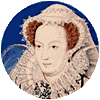History
Sites of Interest. Scotland's Cultural Landmarks

Friendship between Scotland and France has always flourished. In 1548, 6 year old Mary Queen of Scots left for France where she was educated and was to marry the Dauphin, son of Henri II, the French King.

On a hot sunny day in June 1567 Mary Queen of Scots spent her last few hours of freedom with Bothwell facing a rebel army.

A vast sandstone statue of Wallace, carved in 1814, stands overlooking the Tweed Valley high up in old woodlands.
Robert the Bruce led the Scots to victory over England at Bannockburn in 1314. His heart was buried at Melrose Abbey.
In the King's Old Buildings in the middle of Stirling Castle is the Headquarters and Museum of the Argyll and Sutherland Highlanders (Princess Louise's) Regiment. These pages about the Museum tell the story of this Highland Regiment from its founding in 1794 under the walls of the Castle.

Raised in 1633, The Royal Scots, The Royal Regiment, is the oldest regiment in the British Army. The Regimental Headquarters are at Edinburgh Castle, and these pages are about the history, traditions and facts of the Regiment. Includes The Expert Swordsman of 1728, Women in the Crimean War, and a Child at Waterloo.
The Stone of Destiny, traditional coronation stone of Scottish Kings and Queens is still a powerful symbol of Scottish independence.
One of the largest Celtic Hill Forts in Scotland side by side with one of the largest Roman Fortified Garrisons. The Romans and Celts mixed and co-existed in the Tweed Valley. Recent excavations at Trimontium Roman garrison attempted to find out more about their relationship.
This coin shows the portrait of the Roman Emperor Hadrian who visited Britain in 122 AD, and ordered a wall to be built "to separate Romans from Barbarians"...
At the end of the 1700's children were often illiterate and exploited. Robert Owen, cotton mill owner at New Lanark, south of Glasgow, established revolutionary family educational programs.
